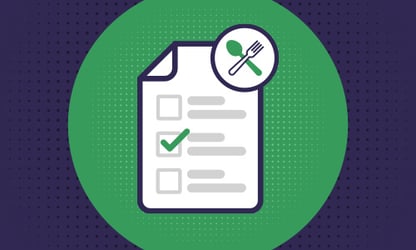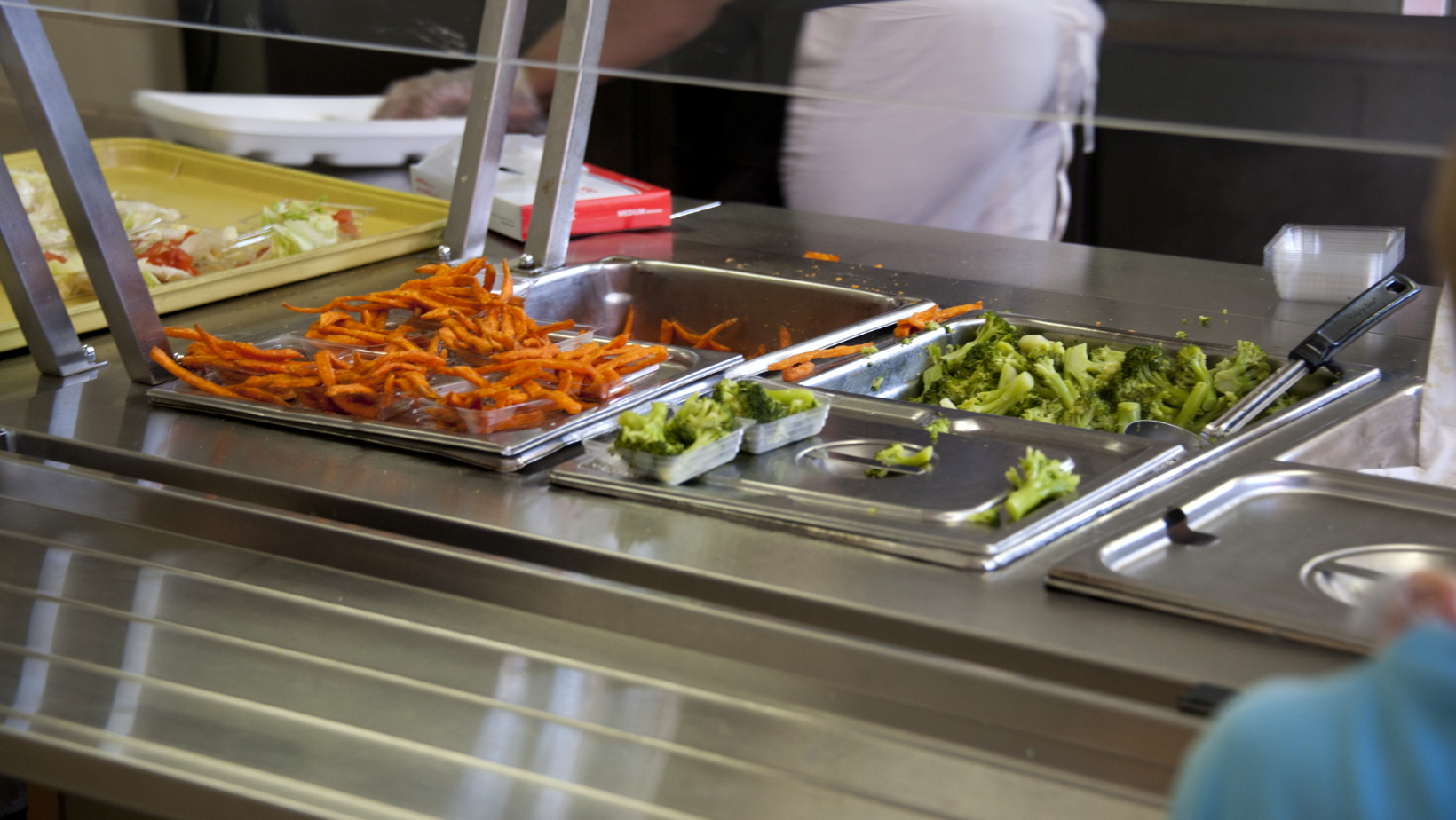
For many schools and school cafeterias, ongoing discussions center on how to improve school lunches. With so much information about sources of healthy alternatives to standard school lunches, now is a great time to make changes that will improve students’ health, benefit local food producers and potentially offer cost savings.
So, how can we improve school lunches? Here are 30 practical ideas to help K-12 schools offer healthier meal options while boosting lunch participation. By following these steps, your schools can create sustainable lunch programs that provide nutritious, appealing and balanced meals while being mindful of cost efficiency.
Table of Contents:
Why Improve School LunchesHow to Improve School Lunches
- 1. Survey Students and Parents
- 2. Enroll in Farm-to-School Programs
- 3. Increase Gardens in School
- 4. Source Health-Focused and Sustainable Foods
- 5. Eliminate Processed Food and Unhealthy Ingredients
- 6. Include a Wide Variety of Vegetarian Options
- 7. Get Inspiration from the World
- 8. Define Rules and Expectations for Students
- 9. Get All the Details and Share Key Information
- 10. Spread the Word
- 11. Family and Community Engagement
- 12. Boost Breakfast
- 13. Make Monthly Menus
- 14. Offer Pre-Order Options
- 15. Honor Religious Beliefs
- 16. Train Kitchen Staff
- 17. Make the Cafeteria More Interesting
- 18. Get Social
- 19. Build Local Business Ties
- 20. Hit the 20 Minute Seated Target
- 21. Move Recess Before Lunch
- 22. Start a Safe Share Table
- 23. Make Water Accessible
- 24. Allergy Smart Serving
- 25. Add a Self-Serve Fruit Bar
- 26. Create Labor-Friendly Designs
- 27. Go Cashless
- 28. Simplify Eligibility and Consider Universal Meal Programs
- 29. Reduce Plate Waste Without Slowing Service
- 30. Use Free Templates and Tools
Why Improve School Lunches?
There are various reasons to improve school lunches. Here are some to consider.
- Nutritional and Social Benefits for Students: Students benefit from a healthy lunch that keeps them focused throughout the day. The social break also helps them expend energy, which benefits concentration. Schools must aim to provide healthy food and a pleasant atmosphere to help students get the most out of lunchtime.
- Participation Rates Lead to Lower Prices: Schools with more children participating in their lunch programs can get better pricing by buying in bulk. Providing good, healthy food and a favorable environment may encourage students and parents to enroll in the lunch programs, so schools can take advantage of savings.
- Improved Funding: Lower food prices can be combined with clever marketing methods, like selling items à la carte, to increase school funding.
How to Improve School Lunches
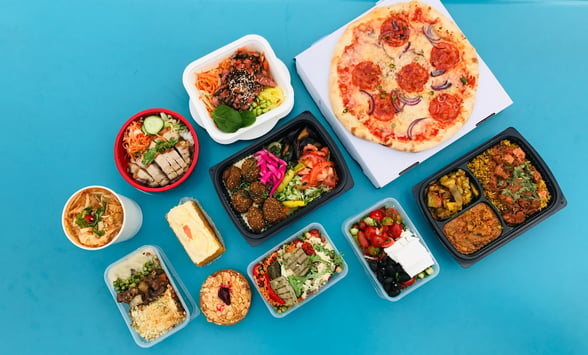
Improving school cafeteria lunches means offering more fresh fruits and vegetables, whole grains, and lean proteins while reducing processed foods and sugary drinks. Schools can also involve students and parents in planning, add fun presentations and choices, and partner with local farms for fresher meals. These steps help make school lunches healthier, more appealing, and better for learning.
Want more school lunch ideas? Check out 30 proven ways schools across the country have improved their lunch programs.
1. Survey Students and Parents
It's important that your lunch program meets the needs of your key stakeholders: students and parents. These groups have differing concerns about school lunches. Students want items that are tasty, and parents usually want food that meets their children’s nutritional needs.
We built customizable survey templates to help you learn how to improve school lunches and increase participation. We offer an age-appropriate template for students and a comprehensive template for parents.
Collecting parent and student feedback will help you understand what's working and where to make improvements. Use this feedback to create a lunch program that meets the needs of your entire school community.
2. Enroll in Farm-to-School Programs
The National Farm to School Network offers invaluable resources to K-12 school cafeterias. The USDA Farm to School Program helps incorporate and promote local foods. These resources are fantastic ways for schools to improve their lunch programs.
Research has found that farm-to-school programs can foster healthy eating in schools. It makes students more likely to try nutritious fruits and vegetables. If you're looking for ways to improve school lunches, look no further than the National Farm to School Network!
3. Increase Gardens in School
Across the U.S., school gardens are becoming a popular way to teach students how to improve school lunches and snacks. Here are some examples:
- A school in Vermont has indoor tower gardens that allow students to learn how fresh ingredients can be grown and used in healthy recipes.
- In New York City, raised beds give students access to a variety of fresh produce.
- Tribal communities offer native food gardens to provide students with a unique chance to learn how to incorporate traditional ingredients into their meals.
- Alice Waters' Edible Schoolyard Project at a middle school in California includes a one-acre garden and a kitchen classroom.
The 2015 USDA Farm to School Census indicated that there were more than 7,000 school gardens across the country.
Nutrition education should be part of the curriculum to ensure that students understand how to use the fresh ingredients they grow. This can be done through field trips to the garden, special lessons about healthy eating habits, and other interactive activities that help students develop a better understanding of how to make nutritious meals.
By teaching nutrition education through school gardens and various curricula, schools can create healthier school cafeteria food environments and help students learn how to improve their own school lunches. Implementing these creative school lunch ideas helps schools create healthier lunches and snacks that students will enjoy and benefit from.
4. Source Health-Focused and Sustainable Foods
Making the switch to higher-quality, more nutritious, local and sustainable food can help schools create healthy school lunches that students enjoy — all while working within a budget. Preparing more meals on-site can also be a great way to improve the quality of school lunches. With the right approach, schools can make positive changes to what their students eat.
In 2016, the Oakland Unified School District in California made a groundbreaking decision to partner with the Center for Good Food Purchasing. This partnership enabled the school to source food from local farms and companies that provided nutritious, minimally processed ingredients.
Additionally, these sources were expected to follow fair labor practices and pay employees a living wage.
In just two years, the school district managed to reduce its animal product intake by 30%. The meat that was still served was sourced from carefully chosen pasture-raised sources.
5. Eliminate Processed Food and Unhealthy Ingredients
If you're wondering how to improve school lunches, consider removing processed food and unhealthy ingredients, which contain added sugars, fats, sodium, and other additives that are harmful to health.
Here are some steps schools can follow to provide healthier meals.
- Eliminate Processed Foods: Processed foods lack important nutrients. Eliminating them from lunch menus can help ensure that students get the vitamins and minerals they need to stay healthy, leading to an overall improvement in students’ learning performance and physical well-being.
- Include Whole, Fresh Foods: Replacing processed foods with whole, fresh foods improves students' health and teaches them long-term habits that reduce the risk of chronic disease as they age.
- Go Organic: Many school cafeterias serve local organic milk and local and/or organic fruits and vegetables that are free of toxins that can be harmful to health. These products also support organic farming.
Several schools have begun adopting healthier practices in their lunchrooms. For example, the Berkeley Unified School District in California has taken steps to make school lunches healthier by eliminating processed foods, like hydrogenated and partially hydrogenated oils, high-fructose corn syrup, refined sugars, and refined flour, as well as chemicals, dye additives, and nitrates.
Paying attention to portion sizes can also be helpful. Aim for recommended serving sizes to promote food waste reduction and prevent kids from overeating.
6. Include a Wide Variety of Vegetarian Options

Schools need to include vegetarian, vegan, and other dietary options in their menus to help ensure students get enough nutrients even if they don't eat meat or particular food groups. Consider adding plant-based meals that are a good source of protein, fiber, and vitamins. These foods cater to dietary restrictions while minimizing the consumption of meat, which contributes to environmental damage.
Several initiatives have been made to limit animal consumption at school and ensure that vegans and vegetarians have meal options. Here are some examples:
- After a successful pilot program of providing plant-based school lunches at seven Los Angeles schools, the Los Angeles Unified School District could become the first in the nation to offer vegan options at every school.
- Lila Copeland, a student and youth director for Earth Peace, proposed providing California students with a daily vegan entrée and nondairy beverage option by 2020, the year she graduated high school.
- The latest Johns Hopkins research shows 95 school districts have implemented Meatless Mondays across the Northeast United States alone.
- As of 2023, all public schools in New York participate in Meatless Mondays and Vegan Fridays.
If you are struggling to come up with school lunch menu ideas for making vegetarian meals delicious and appealing, here are some ideas for improving school lunches with new and different vegetarian options.
Bowls
Bowls are a great way to offer meal variety by including several nutritious foods at once. Try adding quinoa with black beans and veggies, zoodles with veggies or lentil salads to your school lunch menu.
Buddha bowls are also a great option, combining grains or starches with colorful vegetables, legumes/beans or tofu, and sometimes fruit in one dish. For some plant-powered ideas, check out Forkly's Buddha bowl recipes.
Burritos and Wraps
Burritos and wraps are a great way to offer students more healthy options for school lunches. Try incorporating some of these delicious recipes into your lunch program:
- Bean burritos
- Tahini and red pepper rolls,
- Plant-based chickpea “tuna” salad
- Collard wraps
- Veggie sushi rolls
- Plant-powered pita pizzas
These recipes are nutritious and make for an exciting lunch that your students will love!
Sandwiches
Sandwiches are a great way to get creative in the lunchroom! Try preparing cucumber and hummus, apple and nut butter, avocado and veggies or veggie burgers for something different. Hummus is a classic sandwich spread, but why not mix it up by making white bean hummus or adding other ingredients like peas and mint?
Pasta Salad
Try giving your students a healthier version of pasta. Simply make whole-grain or bean-based pasta, then add beans and veggies along with your favorite sauce for an easy, delicious meal. It's an easy way to provide healthy options to your school lunch program.
Salad in a Jar
Meals in a jar are perfect for those who want to make healthier lunch choices. If you're looking for easy, portable and tasty options, there are plenty of creative ideas to try. Recipes like crunchy Asian salad, Mexican black bean salad, fruity kale salad and Greek chickpea salad all work well.
Healthy Sides and Snacks
Sides and snacks are essential for a balanced school lunch. To make them more nutritious, try adding some fresh fruit and seeds, roasted chickpeas, kale chips, celery logs with nut butter and raisins, energy balls, homemade granola bars, chia seed puddings and veggies with hummus.
7. Get Inspiration from the World
 Many countries strive to provide quality meals for students at an affordable cost. Here are some encouraging developments regarding school lunches.
Many countries strive to provide quality meals for students at an affordable cost. Here are some encouraging developments regarding school lunches.
France
In France, by law, at least 50% of school lunches must include vegetables. Additionally, in 2017, the European Union announced plans to invest in a new program that would help cover the costs of school lunches and subsidize the inclusion of fruits and vegetables. This is a great step toward creating healthier school lunch options for students around the world.
U.K.
In the U.K., a public campaign is striving to improve plant-based food options in schools. The mission of this movement is to make several important changes: having meat-free meals available every day, offering different types of meat-free meals that are separate from meat-based dishes, and mandating one completely vegetarian day per week.
Japan
In Japan, school meals are a source of national pride and serve as an example of how to improve school lunches. Food for school lunches is sourced locally whenever possible and is almost always fresh rather than frozen. This approach is something that all schools could learn from to provide healthier meals for their students.
Brazil
Nutritionists in Brazil are taking steps to ensure that students have access to healthier lunches. They create lunch menus with a 30% minimum quota for organic agricultural products sourced from local farmers, and food handlers prepare meals fresh and from scratch.
8. Define Rules and Expectations for Students
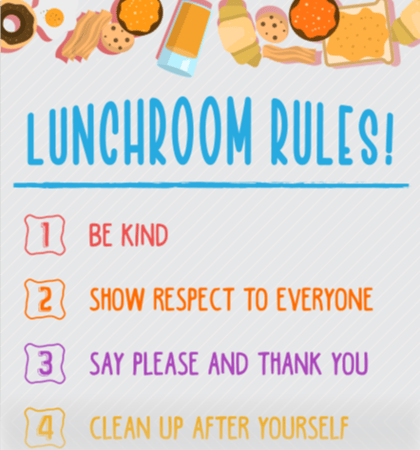 Lunchtime is a crucial part of a student's day, providing them with the energy they need to focus and learn. However, without clear rules and expectations in place, the cafeteria can quickly become a chaotic and unpleasant environment.
Lunchtime is a crucial part of a student's day, providing them with the energy they need to focus and learn. However, without clear rules and expectations in place, the cafeteria can quickly become a chaotic and unpleasant environment.
When school cafeterias are clear about student rules and expectations during lunch, it creates a more organized and efficient environment. This, in turn, can lead to improved behavior and better overall student experiences. It also helps ensure that students eat healthily and dispose of their waste properly.
A clear set of lunchtime rules can reduce bullying and promote inclusivity in the cafeteria. Students who know what is expected of them are less likely to engage in behavior that could harm or exclude others.
Need Help Setting Rules and Expectations?
Our free school lunchroom rule poster templates offer an excellent way to set rules and expectations in school. You can use them to edit and print your own unique set of rules easily. Designed with simplicity in mind, they are easy to read and tailored to meet the specific needs of your school. And the best part? They're completely free!
So why wait? Download our Free School Lunchroom Rule Posters templates today and start improving your school's lunchtime experience. With just a few clicks, you'll be on your way to building a better cafeteria and creating a positive learning environment for your students.
9. Get All the Details and Share Key Information
When parents complete their children's permission slips for school lunch, give them space to fill in any allergies, dietary restrictions and food likes and dislikes. This is a good way to gather information when planning your menus.
Gather financial information as well. This can make it easier for parents to sign their students up for free or reduced-fee lunch.
Teachers and staff want their students to succeed, and if students can't afford lunch, hunger will prevent them from doing so. Arm your teachers and staff with the free and reduced-fee lunch program information parents need to sign up their children.
Try creating a guide or offering a collection of online resources, such as:
- Online applications
- Any state or local programs students can join
10. Spread the Word

If students stop participating in the program, it could be in danger of dying out. The more students participate, the easier it is to drive down costs due to economies of scale.
So, if you want to know how to improve school lunches, the answer is a robust school lunch program with plenty of participation that makes it easier for schools to provide quality lunches at a lower price.
There are several ways to encourage school lunch participation. Here are some ideas:
- School newsletters and weekly emails sent home to parents are a good place to mention the importance of students participating in the school lunch program.
- Create bulletin boards in the school building to promote the school lunch program. Perhaps even get the students involved in making them.
-
Use the bulletin boards to talk about health facts, new menu items, menu themes and other cool aspects of school lunch.
You know the school lunch program is great. Now communicate that to the students.
11. Family & Community Engagement

Don't just focus on the students. One way to improve school lunches is through parental involvement in meals. Here are three techniques we've seen work well.
1. Lunch with Parents
How about inviting parents to join their children for a free lunch in the cafeteria when they sign up for the school lunch program? This would give a unique incentive to sign up and a chance for parents to taste the cafeteria food and live like their kids for an afternoon.
2. Give Cafeteria Tours During Open House
While parents attend open houses and meet with their children's teachers, give them a tour of the rest of the school, including the cafeteria. If you are trying to boost student sign-ups for lunches, connecting the dots for the parents will be helpful.
3. Introduce the Cafeteria Staff
Give the cafeteria staff the respect they deserve but often do not receive. Introduce them in the school newsletter or on the school's website as you would for the teachers and principal. Post pictures and brief bios for these employees to help students and parents get better acquainted with them.
12. Boost Breakfast

Breakfast and lunch programs can work together to support one another.
Though the goal is to get more students signed up for the lunch program, boosting breakfast can be a key answer to improving school lunches. Breakfast is the most important meal of the day, especially for students. Having more students ordering breakfast in the cafeteria will inevitably get them to sign up for the lunch program, too.
The cafeteria already has the equipment and facility to prepare food, so it shouldn't require any additional purchasing besides the food. Expand the menu to include breakfast as a trial run for a few months before the school commits to it. Chances are, it will catch on quickly.
13. Make Monthly Menus

Meal planning a month in advance is not a new concept. This works well for several reasons. The cafeteria can order supplies in advance, prepare different elements of nutritious school meals ahead of time and stay on budget without last-minute spending.
Students enjoy knowing what they'll have for lunch days or weeks in advance. Even parents can appreciate a planned menu because they can plan their own menus at home without conflicts. They can also get insight into their children's nutrition.
We built free menu templates to help you get started.
14. Offer Pre-Order Options
Students will love being able to pick their lunches (or breakfasts) before the bell rings. When their meals are waiting for them, it is one less thing to think about during the school day.
Allowing students to pre-order meals will help keep the lunch line moving swiftly. The cafeteria workers will appreciate this because they will know exactly how many of each meal they must prepare without having much leftover food. This keeps costs down, allowing you to improve the quality of the food you serve.
15. Honor Religious Beliefs

Dietary restrictions due to religious beliefs are another important consideration. Consider offering kosher meals, Halal meals, and meat-free options during Lent.
Menus should list these students' options so they (and their parents) know without having to ask or question the food. Educate your school nutrition staff on the differences and what is considered to be appropriate for each religion observed by students participating in the lunch program.
16. Train Kitchen Staff
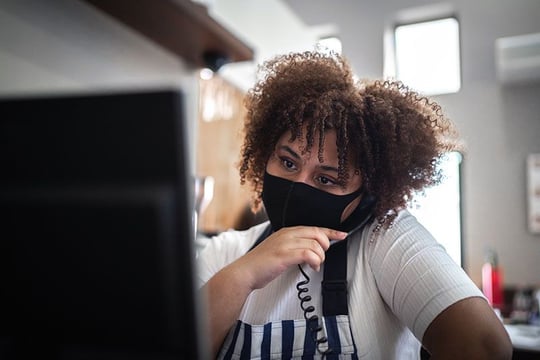
Delicious and nutritious meals start in the kitchen with the cafeteria staff. Proper training includes certification for food handlers. The certification program covers health hazards, proper cooking temperatures, education on cleaning processes and strategies like FIFO.
While training kitchen staff, take the time to educate them on their allotted budget and prices of the items they are using. Encourage them to keep waste to a minimum, helping reduce expenses.
17. Engage Students to Make Lunches Fun

In our time working with 1,300 districts, we've seen five super-effective ways schools engage students during lunchtime. In most cases, it costs very little time or effort. Here are some to consider:
1. Create Menu Themes
School lunch menu themes make meals more interesting and appealing to students. Run contests for students to name menu items and create menu art. Tie in the themes with events happening at the school to unite learning and lunch.
2. Go on a Trip Without Permission Slips
Take students' taste buds on a trip around the world with stops in different countries for international cuisines. You can also stay within U.S. borders and make each state's most popular sandwich.
A menu like this is sure to keep students entertained, and it makes the cafeteria workers' jobs more interesting because they aren’t serving the same old items all the time.
Students also get the chance to learn about geography and other cultures.
3. Have a BBQ and Picnic Day
Weather permitting, take the lunch line outdoors. Who doesn't love a good old-fashioned cookout? Train the cafeteria staff to use the grills and follow safety precautions, including blocking off the grill area from students.
Set up blankets for students and serve picnic-friendly foods to match the theme. Remember to include meat-free options for those with dietary restrictions. For a grilled dessert, throw on some fruit kebabs.
4. Make Mondays Something Special
Mondays are notorious for being tough, especially for students who live for the weekend. By the time Monday comes around, they are exhausted and dragging their feet as they walk into school. Why not give them something to perk up their moods and flip the switch on the typical doom-and-gloom Monday?
One way to improve school lunch is to make Monday's lunch menu something to look forward to. Maybe it could be a student choice. Have them vote on what they want to see on the menu and make it happen.
5. Mark Seasonal Celebrations
Celebrations of a festive holiday, such as Valentine's Day or Christmas, are great for spicing up a school lunch menu. Create holiday-inspired menu items based on any holiday in any part of the world. Encourage your cafeteria staff to get into it and be creative.
18. Get Social
![]()
Social media is the way to a youth's heart, and it can be the way to their stomachs too. Schools wondering how to improve school lunches can start by making an Instagram page, a Facebook account, and even a Snapchat account that students and their parents can follow.
Posting pictures of food is a great idea because we eat with our eyes first. If you can capture school lunch menu items with good angles and lighting, you will get the "likes” and “shares" you need.
In addition to posting pictures of menu items, share random food facts, videos of food being made and polls on what students want to see on the menu. Make it as interactive as you can.
19. Build Local Business Ties
 Serving food that is familiar to students is something they can relate to on a totally different level. Provide pizza Fridays from a popular local pizzeria or Tuesday tacos from the best local taqueria the kids frequent with their families. Tying in the community is good for everyone, and the restaurants may even give you a discount.
Serving food that is familiar to students is something they can relate to on a totally different level. Provide pizza Fridays from a popular local pizzeria or Tuesday tacos from the best local taqueria the kids frequent with their families. Tying in the community is good for everyone, and the restaurants may even give you a discount.
20. Hit the 20 Minute 'Seated Target'

According to the CDC, children should get at least 20 minutes of seated time at lunch. The 20 minutes should not include non-seated activities like:
- Waiting in line for meals
- Using the bathroom
- Walking from table to table to socialize with friends
- Cleaning up after meals
The 20-minute target has been shown to increase nutrient absorption, increase students' likelihood of choosing healthy meal options, and reduce plate waste. Additionally, a JAMA 2021 study reveals that 20 minutes of seated time has been associated with significantly less fruit and vegetable waste as compared to 10 minutes.
Schools can achieve this goal by:
- Decreasing wait times in cafeteria lines by getting help from parent volunteers, accepting pre-payments, and creating an accessible setup in the cafeteria
- Creating comfortable lunch environments that encourage students to relax
- Adding a cold cart next to the meal line so kids can grab meals to go if they don't have time to wait in line
- Setting up an additional POS system for faster payments
21. Move Recess Before Lunch
A Science Direct study reveals that moving recess before lunch can lead to a 54% increase in fruit and vegetable serving size per child and 10% more students consuming fruits and vegetables in general. Researchers believe that when recess is directly after lunch, children tend to run off without eating healthy foods. Scheduling it beforehand could allow students to spend time eating nutritious items.
Additionally, recess gives children a chance to socialize, making them more likely to sit down and eat healthy food at lunch rather than run around talking to their peers.
22. Start a Safe Share Table
According to a Food Waste Fact Sheet, schools waste an estimated 530,000 tons of food each year, enough to fill over 1,000 Olympic-sized swimming pools. Much of this waste comes from students picking up food items and simply discarding them. Cafeterias can't re-serve these items and often throw them in the trash.
This issue can be addressed with a safe share table. Here's how it works:
- The cafeteria sets up a cart or table clearly labeled as the share table
- Students can place wrapped, unopened items on the table, as well as fruits with the skin still intact
- Staff maintain temperature logs of perishable items to ensure safety
- Students who are still hungry can take items off the cart
- Anything that remains uneaten can be donated to after-school programs or nurses who need to give students food with medication
23. Make Water Accessible
Water is a useful weapon against childhood obesity. It reduces the intake of sugary sodas and juices, and provides a feeling of satiety, so kids eat less. According to a Syracuse University Study, drinking water was associated with a .9% point drop in overweight boys, and a .6% point drop in overweight girls, and reduced milk consumption by 12.3 half pints per student per year.
Schools can make water more accessible by setting up dispensers near lunch lines. However, a system must be integrated to ensure a smooth flow.
To reduce traffic, consider including decals on the dispenser that say, "Fill first, sip while you sip," and "refill as you exit."
24. Allergy Smart Serving
According to the CDC, allergies affect one in thirteen children throughout the U.S. Additionally, under 7 CFR 15b in the USDA manual, schools are required to make modifications for students with disabilities, including allergies.
Food service directors can ensure students don't eat foods they are allergic to with the following systems:
- Plain Language Allergen Icons: Include icons on serving trays and food items so students clearly understand what foods they should and shouldn't be eating.
- Use Known Modifications Clip Files at the POS: These special indicators flag orders requiring allergy modifications.
- Collect Allergy Info in Advance: Inquire about allergies when families sign up for lunch programs. If possible, install a system that prohibits students from ordering items they are allergic to.
- Make Allergen-Free Meals: These meals can be eaten safely by students with allergies, ensuring peace of mind.
If you're looking for more tips and guidance, check out our free K-12 School Allergy Guide to get detailed practices and strategies.
25. Add a Self-Serve Fruit Bar
A 2025 natural experiment conducted in Mid-Atlantic elementary schools found that salad bars increased fruit selection by up to .44 cups and intake by up to .36 cups, indicating that students are more likely to eat healthy food if it's easily accessible. Schools wondering how to improve school lunches can encourage kids to eat more fruit and vegetables with the following methods:
- Place fruits and vegetables early in the flow: This positioning will encourage children to choose healthy food first, before their plates get too full.
- Pre-slice: Pre-slicing fruits and vegetables makes them easy to eat, giving kids one less reason to avoid them.
- Include taste tests and name cards: Place cards next to fruits and vegetables, providing their names and tastes, to entice students to try new things.
This CDC article provides more information on encouraging students to lead a healthy lifestyle.
26. Create Labor-Friendly Designs
Staffing shortages are real. A School Nutrition Association survey reveals that 71.6% of all school lunch programs are short at least one staff member, with an overall vacancy rate of 8.7%. Schools must develop efficient processes to ensure students get through lunch lines quickly and have adequate time to eat.
Here are some processes to ensure lunchtime goals are met:
- Create Grab and Go Processes: Integrate a cart for grab-and-go meals and a designated POS system for checkout.
- Recruit Student Ambassadors: Student ambassadors can guide their peers, minimizing traffic and ensuring they get through lines quickly.
- Use Laminated Line Maps: These maps will help students understand where to go so they don't hold up lines or need to ask the staff for support.
27. Go Cashless
The same School Nutrition Association survey reveals that 96.8% of schools that do not offer universal free meals often face challenges with unpaid meal charges. As a result, the unpaid meal debt rose to $6900 in the fall of 2024, a 25.6% jump from 2023.
Schools can avoid meal debt by going cashless. These automated systems can:
- Turn on low balance alerts
- Allow families to auto-replenish their accounts
- Support contactless POS systems to reduce germ spread
- Schools with RevTrak and SIS-integrated systems can add 'pay now' QR codes to menus to make payments easy
- Remove the hassle of dealing with cash, so lines move quickly
If you're looking to learn more about a cashless system, here's an overview of how it works in just seven minutes.

Looking for More Details?
or Call (866-964-3851)
28. Simplify Eligibility and Consider Universal Meal Programs
According to Congress, 60% of NSLP-participating schools offer some sort of universal free meal program, whether through state or federal funding. These programs benefit schools in the following ways:
- Ensures more students participate, lowering food costs
- Streamlines cafeteria line flow as there are no holdups due to payments or eligibility checks
- Reduces the stigma of children who are targeted as low-income because they participate in the school lunch program
If schools are unable to set up a universal free lunch program, they may explore options that support participation, such as:
- Maximizing Community Eligibility: Schools in high-poverty areas may provide students free meals if enough qualify.
- Use Direct Qualification: Set up a program where families that qualify for SNAP or TANF can qualify for free lunches. This system increases participation while decreasing paperwork.
- Run 'Application Sprint' Weeks: This involves designating staff members to help families complete applications quickly, and catching families that qualify but haven't applied.
29. Reduce Waste Without Slowing Service
With elementary schools generating 530,000 tons of waste, the issue is massive. The USDA sets guidelines for an Offer vs. Serve program that allows students to decline items they won't eat, potentially minimizing waste. It generally states that children must be offered five required meal components at lunch and three required meal components at breakfast, but are permitted to refuse components.
Here are some tips for implementing an OVS program in your school:
- Review the OVS tip sheet: The OVS tip sheet provides guidelines ensuring the program meets requirements. Review it with your lunch staff and consider hanging it in your cafeteria.
- Ensure staff understand the concept of a reimbursable meal: The five required meal components at lunch and three required meal components at breakfast do more than ensure meals are nutritious. They make meal expenses reimbursable by the state or federal governments. Lunch staff should understand this aspect and plan meals accordingly.
- Teach children the importance of eating nutritiously: Children should understand they have the right to refuse certain foods, but they should also know the importance of eating nutritiously. This information reduces the risk of them refusing to eat nutritious foods, just because they can.
While OVS programs can reduce waste, schools may also consider composting food, paper plates, and other lunchtime items. This method of recycling cafeteria waste converts waste into valuable soil amendment, putting items that would otherwise be discarded to good use.
30. Use Free Tools and Templates
You and your team are busy. That's why you don't want to reinvent the wheel when it comes to creating material for your school lunches. To help schools understand how to improve school lunches, our team built a free kit that includes:
- Inventory trackers to keep it simple.
- Editable safety checklists you can print instantly.
- Posters that kids actually notice (and follow).
- Menus and calendars to plan ahead without stress.
- And much more!
Bonus Idea: Discover How Thousands of Schools Simply School Meals
Most lunch teams are short staffed but the demands on your people are high. We've seen tens of thousands of schools limit tedious and burdensome routine tasks with an automated tech stack that does wonders.
Want to see how they do it?
Check out our FREE Cafeteria Technology Guide!




.jpg?width=734&height=251&name=School-Lunch-Kit_blog_CTA_image%20(1).jpg)
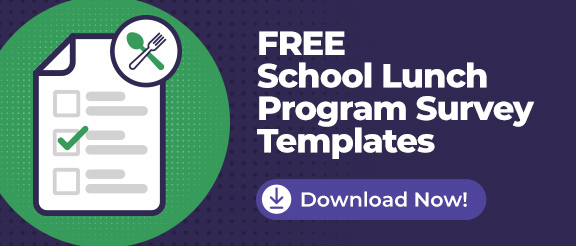


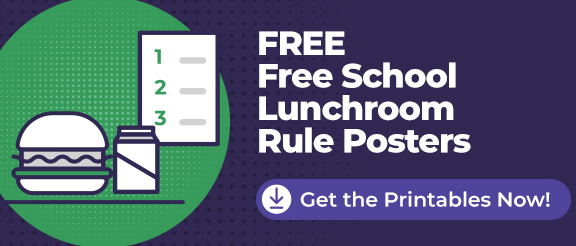

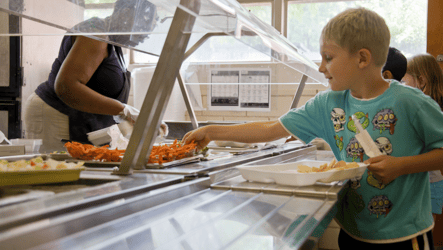
.jpg?width=450&height=250&name=School-Lunch-Rules_thumbnail%20(1).jpg)
